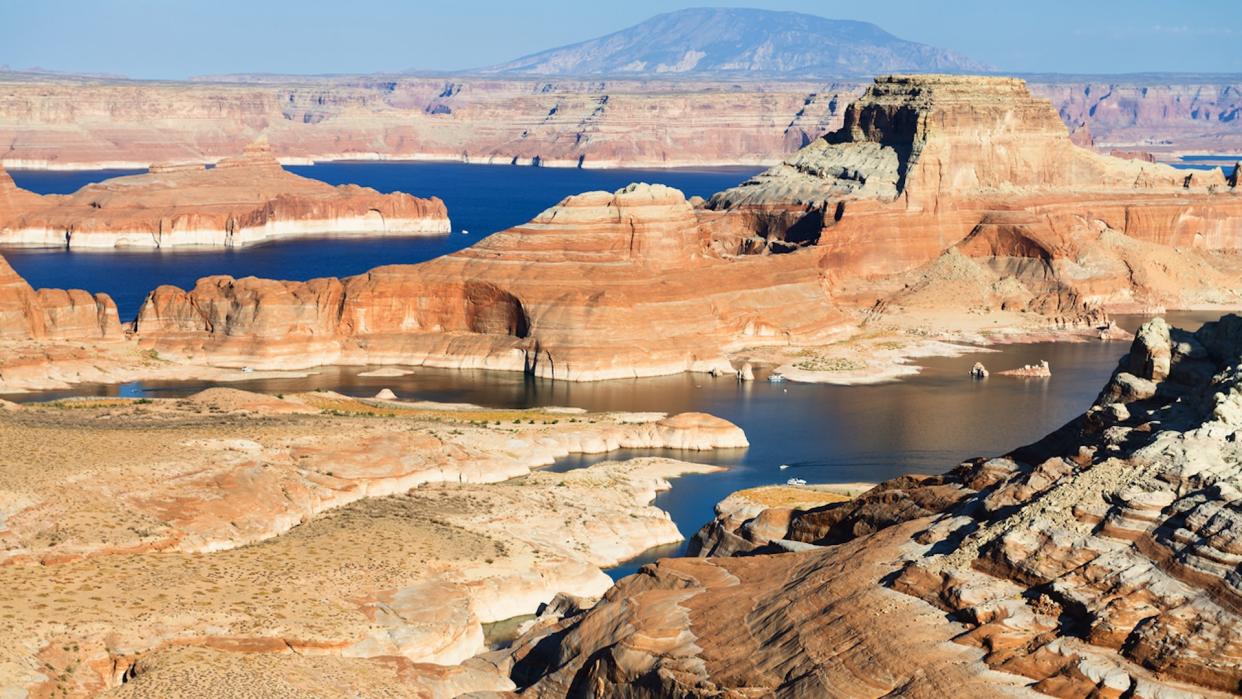Major US lake threatened by persistent drought conditions after water levels rose significantly last year following megadrought: 'Expected to be a bit lower than ... at the end of last year'

Water levels in Lake Powell, located in Utah and Arizona, have been declining since the turn of 2024 because of drought and downstream demands. Satellite imagery has shown just what kind of impact that can have.
Newsweek shared before-and-after pictures of the changes to the lake between September 2022 and October 2023, with a handy slider allowing for a direct comparison of the levels between those two periods.
In the September image, water levels are around 3,529.64 feet above sea level; in the October one, they have risen to 3,572.93 feet. The images show how much the volumes changed, made obvious by the shoreline's movement.
Lake Powell reached record lows in April 2023 at just 22% of its capacity. The reservoir was later boosted by wet weather and record snowpack melting, although it was still nowhere near full.
Since January 2024, the situation has gotten steadily worse. The lake was at 3,568 feet then, but Newsweek reports that it progressively dropped until at least the end of March. After that, snowpack melt — which is expected in spring — offered some relief.
In March 2024, the outlook for the coming years wasn't so bright considering increasing water demands from the homes and businesses Lake Powell serves.
Watch now: Allbirds director reveals details on world's first carbon-free shoe
"As spring turns into summer and temperatures warm, mountain snow will melt, and the water flowing into Lake Powell will increase as it does every year," National Audubon Society's Colorado River program director Jennifer Pitt told Newsweek.
"However, by the end of 2024, the combined storage of [Lake Powell and Lake Mead] is expected to be a bit lower than it was at the end of last year, because total water demands (uses and evaporation) are expected to be greater than the water supply, even this year when snowpack is a bit above average."
In November 2023, according to Newsweek, experts were concerned that Lake Powell's water levels could drop below 3,490 feet. This level is known as the "minimum power pool," and falling below it would stop the generation of power at the Glen Canyon Dam hydroelectric facility.
The U.S. Bureau of Reclamation predicted in April 2023 that the chance the lake could fall that much was 57% before 2026. However, that estimate was revised to just 8% only six months later thanks to a record influx of water, emphasizing the importance of a healthy snowpack melt.
If drought conditions continue, Lake Powell is at serious risk of drying out. Human-caused pollution traps heat in the atmosphere and causes thermometer readings to rise, which increases the risk and intensity of extreme weather conditions.
As Newsweek observed, Lake Powell is essential for the water and power supply for 40 million people in the southwest, and it's also needed to provide water for 4-5 million acres of farmland.
Conserving water is hugely important, then, not only to preserve this vital resource but to keep the lights on and secure the local food supply.
Measures such as switching to a water-saving shower head, turning off the tap while brushing your teeth, or installing a native-plant or xeriscaped garden can help to reduce water consumption and prevent vital lakes from running dry.
On a wider scale, efforts are being put in place to secure water rights along the Colorado River, which serves Lake Powell. This would determine how water from the river is distributed in the areas it runs through.
The Biden-Harris administration also announced in 2023 that efforts to ensure the stability of the Colorado River system will conserve 3 million acre-feet of water by 2026. Federal funding for the Lower Basin states of Nevada, Arizona, and California was issued in return for reduced water use.
Join our free newsletter for cool news and cool tips that make it easy to help yourself while helping the planet.

